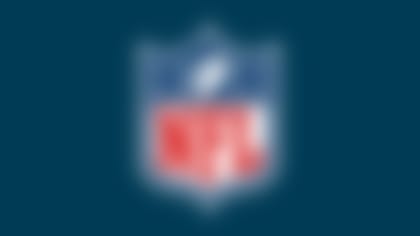Stacking a draft board accurately is a necessary start to drafting well but it isn't the only thing that makes for the right selections. There are driving forces that factor into picking players and many times these forces are specific to a club.
Injury history of players currently on the roster… injury information about prospects… contract demands or projected contract issues with players on the roster… signability of certain draft picks based on the agent representing them… off-the-field issues. These are just a few of the subtle considerations that go into a selection.
After talking to personnel people and GMs around the league in the last few days, it is clear to me that medical issues and injury history did play a big role in the final decisions. If a team feels like a player on its roster has become a medical risk, they have to protect themselves in the draft by bringing in a player at the same position; they cannot get caught in a bad situation when the season rolls around.
After Jake Long was picked first overall, the run on offensive tackles really started with Ryan Clady (No. 12 to Denver), Chris Williams (No. 14 to Chicago), and Brandon Albert (No. 15 to Kansas City). While those picks were all predictable, the panic button was hit when Gosder Cherilus went at No. 17 to Detroit. The Lions wanted Cherilus all along, which is why they were willing to move down from the 15th spot that would have given them Albert.
But that also meant that the fifth tackle was off the board in the first 17 picks. Carolina grabbed Jeff Otah at No. 19, which wasn't a surprise, but it was quickly followed by Atlanta trading up for Sam Baker at No. 21. And that led the Texans to realize they couldn't wait any longer to take a tackle. Their current left tackle, Charles Spencer, has played just two games in two years due to injuries. Duane Brown was rising fast on draft boards in the past month -- but the reason he became a first-round pick was the combination of Houston's medical history at the position and a run on tackles. At least the Texans were able to move down in the first round before selecting Brown, but they couldn't afford to risk losing him by waiting any longer.
A case could have been made for the Texans to select a defensive back in the first round. The Texans' terrific corner, Dunta Robinson, only played nine games last year and may not be ready right away this season. Corners such as Antoine Cason and Brandon Flowers were still on the board when they drafted Brown with the 26th pick. Instead, they addressed that need in the third round by taking Antwaun Molden, who protects the team against medical issues.
Contract demands looked to factor into the Jets decision to take tight end Dustin Keller in the first round. Don't get me wrong -- Keller was the top tight end on most draft boards and is a heck of a talent to add to the roster. But Jets tight end Chris Baker was publicly looking for a new contract or to be traded before the draft. Baker hasn't done enough on the field to put the club in that position and now the Jets have leveraged themselves against the demands of the player.
As for signability of a draft pick, it is only a factor if two players are considered even in the area of talent. Rarely is there a deadlock on players where the topic of who the agent is becomes the tie-breaking factor, but I would be lying if I said it never came up in the final minutes before a selection. Some teams have great relationships with certain agents and know that getting a deal done will not be a problem. For example, Marvin Demoff is one of the most respected agents in the NFL. He can be very tough at the bargaining table, but the Rams have done business with Demoff many times and I would guess there is a comfort level the team has that they can get a deal done for Chris Long in a timely fashion. The critical component here will be five or six years. Keep in mind, the top pick did a five-year deal and the Rams may want a six-year deal for Long.
Know your competition
Teams that just can't get over the hump against a perennial division champion have to focus on building a team that can take that opponent down. The Jaguars are chasing the Colts; the Bills are chasing the Patriots; the Browns have been chasing the entire AFC north; the Redskins are chasing the world-champion Giants. All four of those teams paid very close attention to division rivals in their offseason decisions and they look closer to the leaders today.
Jacksonville can go toe-to-toe with the Colts, but if they can't get Peyton Manning to the ground in the last two minutes of a close game, then they will never be declared the division champion. So they took draft-day risks to get the best pass rusher left on the board when they jumped from the No. 26 spot to the No. 8 spot to get Derrick Harvey, and then they came right back in the second round for Quentin Groves. Between the two players, they bring 47 sacks and 75 tackles for a loss. The plan is to get to Manning and stop the passing game before he gets the ball out of his hand. Adding a corner like Lito Sheppard in a trade would be the final piece to giving the Jags the best chance to get over the top in the AFC South.
Buffalo knows what it is up against with Tom Brady and company and the Bills have a lot of work to do to catch New England. Dick Jauron told me the club is always thinking about what has to be done to catch the Patriots. Leodis McKelvin on the corner gives them an upgrade in coverage against the powerful passing attack of the Patriotss and receiver James Hardy will increase their scoring potential. Last year, the Bills combined for 17 points in two games against New England and just 15.8 points per game on the season. They need to score in the 20s to have a chance and they are inching closer to that after the 2008 draft.
With the Steelers and Ravens in the AFC North, the Browns play in a division where stopping the run is the top priority. Adding Shaun Rogers and Corey Williams in the offseason was the start of fixing those issues and the draft took them a step closer with the addition of linebacker Beau Bell. Willie Parker and Willis McGahee both had over 100 yards rushing in both of their games against Cleveland last season. The Browns expect to fix that issue this year and then move on to slowing down the Cincinnati passing game. Here's another team that could complete its offseason objective of winning its division by adding a corner like Sheppard in a trade.
Washington averaged 22 points a game against NFC East opponents last year, but the Redskins need to generate more offense than that. The team committed to three offensive receiving weapons with its first three picks, adding wide receivers Devin Thomas and Malcolm Kelly as well as tight end Fred Davis. There's a good chance the development of quarterback Jason Campbell and the new additions will add up to increased scoring -- but did the Redskins do enough to get pressure on division quarterbacks? Last year, the Redskins sacked Eli Manning four times and only gave up two touchdown passes against the Giants. Washington sacked Donovan McNabb five times and allowed four touchdown passes to the Eagles. The Redskins got to Tony Romo twice, while giving up four touchdown passes. So in six games against division opponents, Washington generated 11 sacks and gave up 10 touchdown passes. Washington's decision to skip the pass rusher and generate more offense looks like the right way to go.



